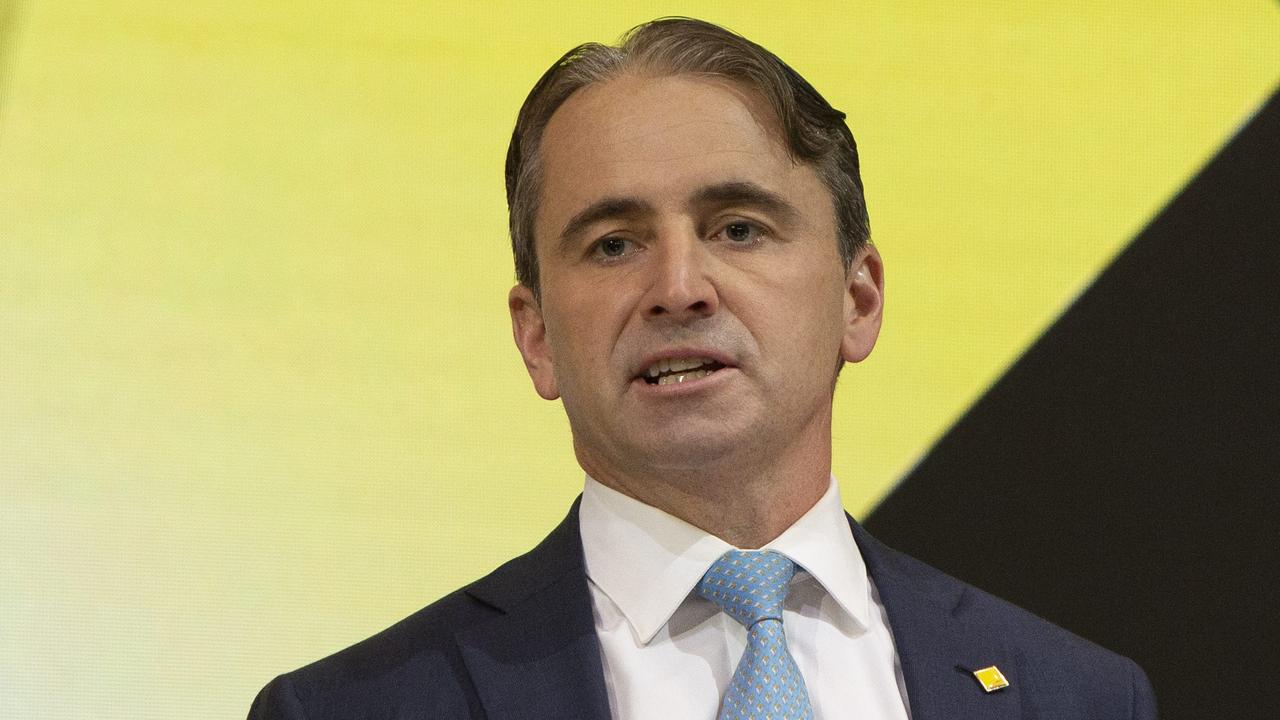NAB banks on business lending amid home loan carnage
NAB is writing two in three home loans below the cost of capital, with the bank increasingly focusing on its profitable business lending arm amid hot competition in the mortgage market.

Business
Don't miss out on the headlines from Business. Followed categories will be added to My News.
The latest set of results from National Australia Bank have revealed the resilience of the lender’s business arm, but home mortgages have been a wipeout with the lender revealing it was trying to stop writing almost two in three loans below the cost of capital.
Unveiling its $3.5bn first half cash profit on Thursday, NAB pointed to its net interest margins that edged up 1 basis points in the half to 1.72, marking an overall improvement in the yield on loans extended by the lender.
Despite this, overall cash profits shrank 12.8 per cent on the half, contracting a further 3 per cent on the prior half.
But NAB’s business and private banking arm proved the powerhouse of the group, with profits only pinched 2.4 per cent to $1.67bn.
This came as lending volumes surged, despite gloomy predictions about the Australian economy.
The corporate and institutional banking arm also saw cash earnings take a 2.8 per cent hit, with the repeat of offshore banking unit tax concessions squeezing returns.
The New Zealand bank business saw returns sliced by 7.7 per cent to $750m, with increased expenses and tech spend weighing on the operation.
But NAB’s personal banking business took a drubbing, with profits tumbling 29.6 per cent to $553m, with the bank noting “competitive pressures more than offset disciplined volume growth and benefits from the higher interest rate environment”.
NAB chief executive Andrew Irvine said the bank had strengths in picking up business from potential homebuyers with its fast turnaround, but struggled in the face of price-led switching by refinancing borrowers.
He said the bank was responding to the price pressure by keeping a 5-7 basis point premium to other lenders in the market, focusing its balance sheet instead on its business lending arm.
Mr Irvine said this had allowed NAB to “throttle growth a little bit”, but said the bank was still competing for new business.
But Mr Irvine said despite the price pressures on home loans he was concerned many Australians were unable to access the housing market due to restrictive lending standards and sky high property prices.
“There’s a good debate to be had as a country on that, if we’ve got our settings right or too stringent,” he said.
“Every Australian deserves a home and has a right to aspire to home ownership.”
Mr Irvine previously ran NAB’s business lender before being handed the reins to the bank after veteran banker Rosss McEwan retired in April.
He said NAB’s business lending operation was “remaining robust”, noting it was the envy of banking rivals in the market.
Mr Irvine said NAB had been able to defend its market presence as the largest lender in the market, despite a string of recent announcements from rivals tipping investment in business banking.
“The first newspaper article I ever read coming to Australia in September 2020 was about other banks coming after our business banking market. That article in some way shape or form gets pushed out every six months,” he said.
“We’ve been able to retain market share, but also increase it, which I’m not sure people would have expected.”
NAB said its overall gross loan advances were up 3.5 per cent, with the slump in revenues caused by lower margins across its business.
Citi analyst Brendan Sproules said while NAB’s results were in line with expectations it was “insufficient to justify NAB’s share price”.
“The open question is how will new management make their mark on the business,” he said.
“Hoping for reduced regulatory and project spend to roll-off and afford new and accelerated investment has been a difficult strategy for peers.”
Pengana chief investment officer Rhett Kessler said NAB’s results showed it was the “best business bank” in the market.
“With growth that’s a very high single digit, that’s a nice business with good volume growth,” he said.
“Margins are a bit under pressure, but probably not as bad as we thought.”
NAB said it would lift the interim dividend to 84c, up from 83c posted in the first half last year.
Its shares closed up 1.45 per cent to $34.28.
More Coverage
Originally published as NAB banks on business lending amid home loan carnage





